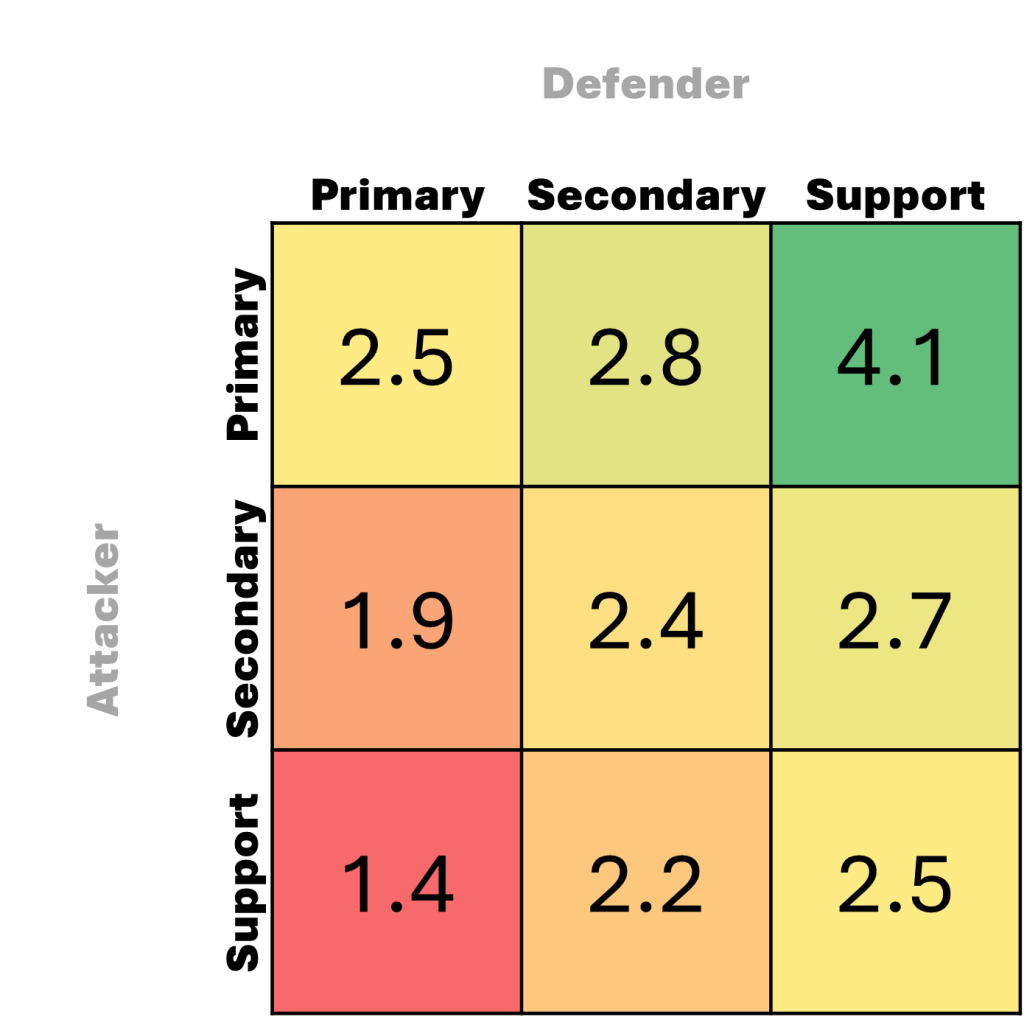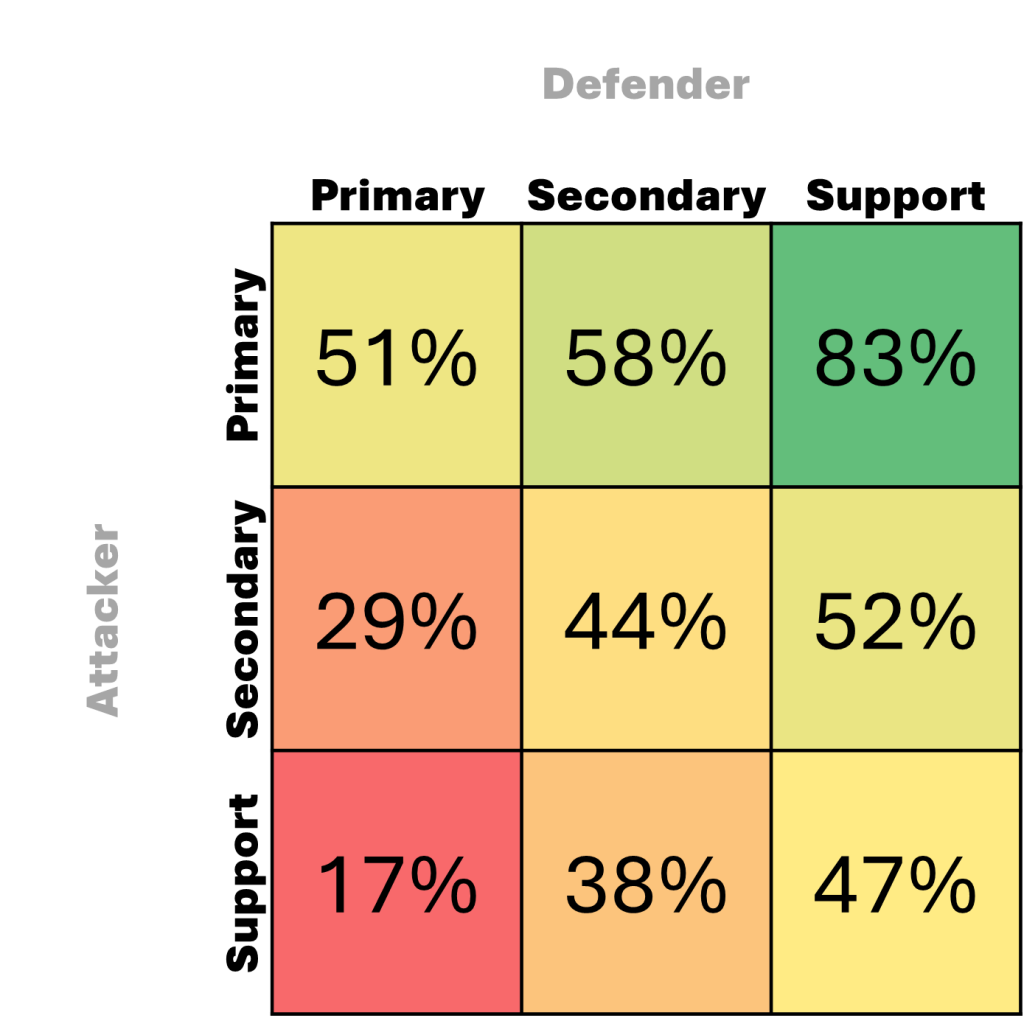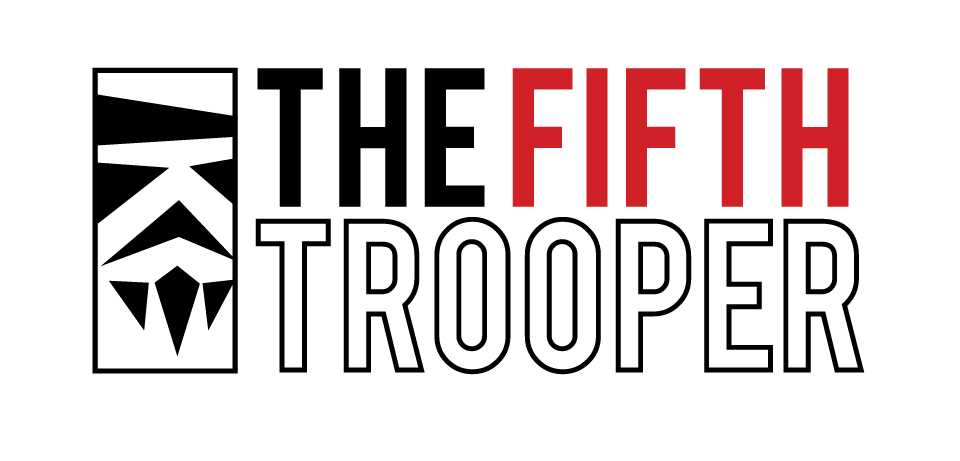After many months with no new releases, a pile of new plastic is coming in January, February, and beyond. That means it’s spoiler season. We already know all the cards from the January boxes (Luke and Vader) and are starting to learn more about the February boxes.
The discussion around the preview units has been fun and exciting, but also a reminder that we all have our own approaches to evaluating units. I see a decent amount of “oh wow, this unit can hit X damage on their tree” or “oh no, they cap out at X damage”. This approach is the polar opposite of my own. This isn’t because of the focus on damage, that just happens to be the two examples I used. No, it’s because that statement focuses on the full combat tree. There are very few units, if any, where I really care about the back end of their tree. Most units will rarely get anywhere close to the end of their tree. As such, I don’t find it useful to look much past the start. I’m usually weighing the first one or two slots heavily, then everything beyond that diminishes quickly in importance.
I’m not saying a unit’s full potential is irrelevant, but gameplans that involve everything going right are not robust, winning plans. If I can set myself up to accomplish my goals even when the dice go poorly or the situation is non-ideal, then that is a much more robust gameplan. Of course, a full team of high-floor, low ceiling units isn’t necessarily the goal – we want splash potential! But “what is the worst this unit can do with OK to bad luck” is a critical part of evaluation. Building off of this, I wanted to take today to look at downside mitigation more broadly in Shatterpoint. What are things we can do to limit downside and be resilient to bad luck?
Dice
Obviously things that don’t involve dice are generally more reliable than things that do involve dice, but you do need to roll dice eventually. We’ll start by investigating situations where dice are involved.
Expected Results
The first priority I had coming into this article was answering the question “how far down my tree should I reasonably expect to get on any given attack?” So why not start there?
To help answer this question, I’m going to dive back into the simulator. Usually when I do examples for these articles I pick the attacker and defender carefully to try and illustrate a situation. However, in this case I don’t want to just simulate a mid-level attacker into a mid-level defender. I want to get a feel for the whole range of possible attacks, including good attackers into bad defenders, bad attackers into good defenders, and everything in between. I also don’t want to accidentally bias the results by cherry-picking certain combos. As such, for these simulations I randomly chose an attacking unit, randomly chose a defender, then chose melee/range, stances, etc. based on what would be a reasonable in-game scenario.
As I say, was trying be to reasonable, which does not necessarily mean generous. Easy-to-achieve abilities or things that cost about one force were generally included (Sabe’s Expose Flank, focuses for Mandalorians, Obi’s Hello There, etc.) whereas more conditional abilities were not (Aurra’s Expendable Distraction, no focus for Padme, etc.). Conditions, namely expose, were not considered. I’ve already written an article about how that can affect results. Hunker tokens and cover were also not considered. Each attacker/defender scenario was simulated 10,000 times, as is the will of the simulator. After that I took the average results past cover. I took a simple average of these … averages … which is displayed below.

Overall I did 45 simulations, or 450,000 dice rolls. It didn’t break down nicely into five simulations per category because random number generators be fickle. I did manage at least three per category though. As expected, primaries are generally the best attackers and defenders, while supports are the worst. Given the relatively small sample size I don’t want to draw too many conclusions from this data, but I think it’s safe to say that you are usually looking at 2-3 successes past cover. This finding is somewhat good for me because that’s what my expectation coming in, and I like being proven correct. Because I was anticipating this result, as I went along I also recorded the percent chance that an attack would get three or more results past defense. I’ve averaged those results below as well.

Again, I don’t want to put too much stock into these numbers because of the sample size, but the general idea should be clear. Getting further than two spots down the tree is often a dicey (pun very much intended) proposition.
So what is the main takeaway? We’ve seen that often you can expect 2-3 results down the combat tree for any given attack. For a rough mental heuristic, I like to assume slightly below average dice for myself and slightly above average results for my opponent. In this case I’d add or subtract one result: I’d budget 1-2 successes for myself and 3-4 for my opponent. Of course, you can still do worse than 1-2 and they can still do better than 3-4. And sometimes you’ll be in a situation where you say “I need 4 successes” or whatnot, things happen. Generally speaking, planning based on this rule of thumb will result in consistent performance where you shouldn’t feel let down by dice. It’s like I tell my wife: if you lower your expectations, you won’t be as disappointed!
Crits & Expertise
Staying on the topic of dice, what’s the best way to raise the floor on your results? Crits of course! Jango’s Beskar armour is pretty tanky, but if you roll crits there’s nothing he can do about it. Let’s contextualize this, though: crits aren’t going to help you get to the end of your tree. The chances of getting all the way down your tree with crits is relatively small. Most units just can’t reliably generate that volume of crits. But, staying on theme with the article, crits mitigate the downside of bad rolls. Two crits and a bunch of fails can still get the job done against a lot of defenders!
Recently I was simulating some scenarios around five dice attacks, trying to see where Luke’s stacks up. Through that process I had an interesting discovery: Luke’s Form V Djem So attack with five dice is less consistent than his Form III Soresu stance, at least in the scenario tested. Initially I was a bit surprised because Djem So gives two hits on just one expertise. However, Soresu gives one crit on one expertise and two crits on two expertise. That is much better crit generation, and with the small dice pool it’s fairly likely that all hits are blocked by the defender.


Let’s take a look at the full data. Usually I use Rex as my middle-of-the-road defender, but let’s switch it up to the Stormtrooper Sergeant! (It’s the same stat block, I just want to be cool and trendy)
| Attacker | Type | Stance | Average Successes Past Defense | Average Crits | Chance of 3+ Successes |
| Rex | Either | Tactical Supremacy | 1.75 | 0.84 | 24% |
| Luke | Melee | Form II Soresu | 1.97 | 1.75 | 28% |
| Luke | Melee | Form V Djem So | 1.66 | 0.72 | 22% |
| B2 | Range | Suppression Protocol | 0.85 | 0.62 | 4% |
| Magna | Melee | Defensive Programs | 1.99 | 1.76 | 29% |
| Talzin | Range | Great Mother | 1.92 | 1.39 | 27% |
Despite having crit + hit on one expertise and crit + hit +hit on three, Mother Talzin just sliiiightly underperforms the big crit boys in this simulation. Crits are king with low dice pools, and if you roll badly with a big dice pool, isn’t that just a small dice pool with added blanks? Deep, huh?

B2s stick out in that chart like a sore thumb. Their expertise is quite bad when it comes to getting down the tree, but it has it’s own special way of mitigating downside. B2 ranged expertise generates damage, which can’t be stopped by mere defensive rolls. Even if you’re shooting into Makashi-stance Dooku with oodles of force to spend, he can’t do anything to prevent expertise damage. In a similar way, Stormtroopers shooting a seven dice attack have an 86% chance to get at least one expertise, applying a pin. No a bad consolation prize.
Expertise gives some cheeky ways to get around defense good defense rolls. The use cases tend to be a bit niche, but it can be handy when you need it.
Non-Dice
Not as much fancy simulation here, and I already spent too much time running all those simulations for a few lousy graphics earlier, so I’ll make this quick!
Guaranteed Effects
If you’re a big consumer of Shatterpoint content, you’ve probably heard a lot about “diceless displacement” and such. That phrase refers to abilities like Force Push, Capture Wire, Manipulating Hand, etc. which relocate an enemy without the need for a dice roll. Shoves are great, but there are some very defensive characters that are just very hard to dislodge. In those cases, diceless displacement is especially important. I recommended having 1-2 such abilities in my strike team building article and I think that’s a fairly common approach.
Despite getting a lot of press, diceless displacement is not the only guaranteed effect of note when it comes to downside mitigation. Remember when I said stormtroopers have an 86% chance of giving out a pin when attacking with seven dice? While 86% is good, I like 100% even more. Abilities like Coordinated Fire: Pin can give out a pin guaranteed when you attack. There have definitively been times I’ve attacked units and been happy just dishing out a pin, disarm, or strain to mess up their next activation. Getting results down the tree would have been a nice bonus, but in those instances Coordinated Fire ensured I was getting something useful.
This may not fit perfectly in this section, but I don’t really have a better place to put it: non-directional movement. What I mean by that is moves where you are guaranteed (there’s the tie-in to the topic!) to get to move in whatever direction you want rather than “towards” or “away” from a specified target. While Bounty Hunters having a tactical move towards an enemy is usually fine, there are some circumstances where the limitation prevents a more effective play. I’ve had the same frustration with Sabe’s movement of Handmaidens towards friendly primaries. Often the restriction is fine, but I don’t value those as highly as unrestricted movement abilities. Of course, you get what you pay for in this world and the flexible movement abilities are usually more expensive force-wise.
Volume
Do you know what a good way to stay alive is? Having a ton of health. Let’s compare Bo-Katan and Savage. Both roll four defense dice, but Bo has a better expertise that often leads to one extra block compared to Savage. However, both can whiff, or both can be exposed. We recently got the Leia Organa, Freedom Fighter preview and she gives Coordinated Fire: Expose to rebels, so the proliferation of expose abilities continues. I don’t want to sound like an old man here, but back in my day defensive expertise meant something! In a world with plenty of expose effects, there’s something to be said for relying on big health pools rather than strong defensive dice. For one attack, two health is about equivalent to one extra block in many circumstances, but when we’re talking about downside mitigation, extra health raises your durability floor considerably.


This particular comparison also ties back into our previous discussion about guaranteed effects. Bo can get Protection to increase her durability when contesting, but if she’s shoved off an objective she’ll lose it. Savage always has Protection online. More conditions come with more downside risk.
Even though this is technically the non-dice section, I would be remiss not to mention dice volume here. Throwing more dice raises both the floor and ceiling for rolls. Sure, you can still whiff on 10 dice, but it’s harder than whiffing on 7 dice. There’s a reason Jedi hunter Vader is so well regarded: it’s that he brings big offensive dice volume with an almost guaranteed effect (you just need more than two health remaining). Those are two big things that limit downside. He also does it without spending force, which leads to my final point.
Force Efficiency
I think it’s not controversial to say that cool abilities are cool. Flinging someone off an objective with Force Push is a great time. But if it’s late game and your character has been injured, that Force Push could cost three force. In many lists that’s half of your force pool for that deck, on one ability! Downside mitigation is all about setting yourself up to still be effective even when things aren’t quite going right. A big part of that is still being able to use your abilities when things get rough. It’s like the famous Mike Tyson quote, “everybody has a plan until they get punched in the face.” When you get punched in the face, you still need to be able to punch back.
We saw in our first annual Shatterpoint tier list that force efficient units are highly valued, especially for primaries. Jango is rated very highly by myself and the community, in no small part because his Capture Wire dice-less displacement ability starts at just one force. Lord Maul also received a lot of love. He is the ultimate force efficient unit because his identity allows him to take damage instead of spending force, meaning he can almost always do his tricks, no matter the circumstances.
Wrap-Up
In this season of card spoilers, we all get intoxicated asking “what if?” I get it! It’s fun and exciting to look at a unit and imagine what they could look like at peak performance. What if they run their tree? What if we’re in situation X and they can use their ability Y for huge swing? But when evaluating these units you should also ask other questions.
- What if they whiff a dice roll?
- What if they are injured?
If a unit can be effective even when the situation is non-ideal, then that is a great unit. If they have some downside weaknesses that can be OK, maybe you just need to shore that up with the rest of your strike team. In-game I don’t want to generally plan based on things going well for me, or evening going OK. As a rule of thumb, I like to assume I’ll roll a little below average and my opponent will roll a little above. Downside mitigation is about making the bad times less bad, allowing you to stay effective in more scenarios. If you can handle your strike team at it’s worst, then you surely deserve it at it’s best.
A well-balanced Shatterpoint content diet involves videos! To stay healthy, check out my YouTube channel, Bombad Tactics. I’ve got videos with battle reports, puzzles, and rules explanations.
